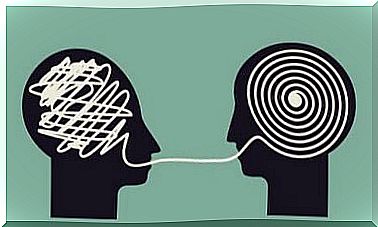The Experiential Avoidance Disorder

Ours is the era of the culture of happiness, one in which you have to be happy at all costs, whatever happens. The problem is that when we fail to be happy, we feel frustrated and sad and, as a result, we make our situation worse. In this article, we will talk about experiential avoidance disorder.
What is certain is that happiness, or rather, emotional well-being is not permanent. We cannot say to ourselves: “I am happy!”, Because it does not correspond to the truth.
Trying to always feel good from an emotional point of view is an illusion that causes us deep suffering. For example, when we try to feel less anxious or less sad, for some reason, we increase our discomfort. The psychological pressure we put on ourselves when we want to feel good or be happy is the perfect way to not feel comfortable. It is a paradox, but emotional avoidance inevitably leads to an increase in those emotions from which we want to escape.

Imagine you are in the middle of the ocean on a raft surrounded by sharks and someone tells you not to be nervous because there is a risk of falling into the sea among the sharks. What do you think will happen? Surely that ban will make you even more nervous. The truth is, it’s not natural to inhibit anxiety under those circumstances.
In that context, the most logical thing to do is to accept and experience anxiety in all its facets. Leave room for this feeling and wait for your mind to get used to this emotion naturally, without forcing it (if that’s the only thing you can do).
Experiential avoidance disorder is characterized by a tendency to constantly want to prioritize positive feelings (to feel good) and to act in such a way as to achieve immediate well-being. Let’s explain more clearly what it is.
The experiential avoidance disorder
Acceptance and Commitment Therapy (ACT ) rejects traditional diagnostic classification systems. It considers the behavior of the individual in a given context as the only element of analysis. In this therapy, the concept of psychopathology is identified through the so-called experiential avoidance disorder.
Experiential avoidance creates an inflexible behavioral pattern. We start from a verbal model that tends to avoid at all costs the terms concerning suffering. For this reason, it is necessary to analyze the personal events, sensations, feelings and circumstances that generate it.
The person suffering from experiential avoidance disorder systematically rejects negative feelings, does not want to experience them or hear about them under any circumstances. She often tells herself that having negative emotions is terrible and painful and that one must always be happy: she considers herself “strange” if she feels sad about something and worries about the judgment of others if they see her anxious.
All these thoughts cause the subject to try to control their emotions quickly and in a good way. The problem is that the emotional control is momentary and in a short time the discomfort manifests itself more strongly again.
The person suffering from experiential avoidance disorder raises barriers to their emotions so that they cannot feel them. At first everything seems to work, but over time, the barriers collapse and the emotions come back even stronger.
What can you do if you have this disorder?
Those who suffer from experiential avoidance disorder and want to overcome the problem must understand that suffering is part of life. We must not worry, but accept that emotional distress is a sensation experienced by all people for the simple fact of being alive.
For example, if my partner broke up with me after five years in a relationship, it doesn’t make sense to go desperately looking for another relationship for fear of getting sick or being alone. You have to experience the pain caused by the loss. This is the best way to assimilate what has happened to us and learn for the future.

If we raise barriers or adopt defensive behaviors so as not to suffer in the short term, the only thing we will achieve is to temporarily stop the pain. But then we will end up suffering more.
So, the first thing to do is embrace your demons and experience your emotions and feelings, whatever they are.
We all know that anxiety and sadness are two unpleasant feelings that we would rather never have. But it is also true that life does not always go as we would like and, inevitably, we often find ourselves having to face and overcome difficult moments.
It is also important to know our values and to know what our goals in life are. In this way, we can try to reach them regardless of our emotions. Emotions don’t have to limit us. It is one thing to feel them when something happens to us, another is to be a slave to them.
Emotions, positive or negative, can accompany us in daily life as a headache, the cold in winter or the news in the newspapers do. If we know what we want for the future, in the short or long term, we will act instead of feeling sick and uncomfortable.









